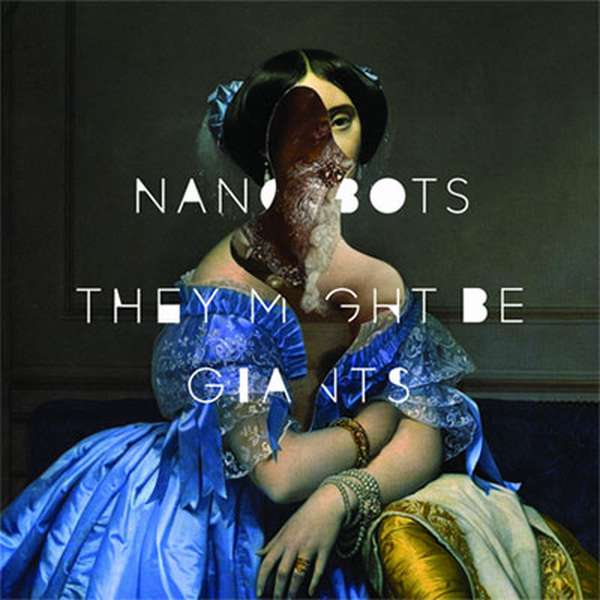When I first heard these guys in the late ‘80s or early ‘90s, there wasn’t really a name for this. Now, I guess it would be called indie pop. The band, led by songwriters John Linnell and John Flansburgh, has long been on the quirky side with a touch of novelty, but it’s their strong sense of melody and that off-kilter pop sensibility that has kept their fan base loyal throughout the years, not just the wit. Entering 2013, I hadn’t listened to anything new in probably a decade. Has the band shifted directions with Nanobots? No.
The twenty-five tracks here take up about 45 minutes and all play in that familiar range of emotion: playful, whimsical, and a touch scientific and historic for good measure. What defines this record in terms of their discography is the use of several short songs. It’s not “Fingertips”—the shorties here run 10 to 30 seconds and feel like full creations. Also, they’re mixed throughout the record in a splendid piece of sequencing, and they are more hit than miss. Closing on the 0:24 “Didn’t Kill Me,” for example, is a brilliant move.
As for the rest of the record, the eighteen songs that top a minute deliver a familiar sound. Standouts come in the titular track and “9 Secret Steps,” but memorable jams also include “Circular Karate Chop,” with its abundance of video game references, “Call You Mom,” and “Tesla.” When I say it sounds familiar, I mean it as a positive. The band’s strengths are displayed well in these songs. On numerous others, they branch out. “Sometimes a Lonely Way” is only 2:40, but it gets dull fast and feels longer. The same can be said of “Black Ops,” though its repetition stands among the catchiest tracks on the record. Meanwhile, “Replicant” has some shades of Katamari Damacy jazziness at its core, and the horns in its follow-up, “The Darlings of Lumberland,” feels eerily familiar.
As a listener with a middling interest in the band, Nanobots holds up. They Might Be Giants are still putting out quality and inventive tunes with their 16th studio album—something few artists are capable of doing. The trouble of such an extensive output, though, is that it gets hard for the band to top previous works. It’s a decent record, but they’ve had far better and more consistent releases over the years.







